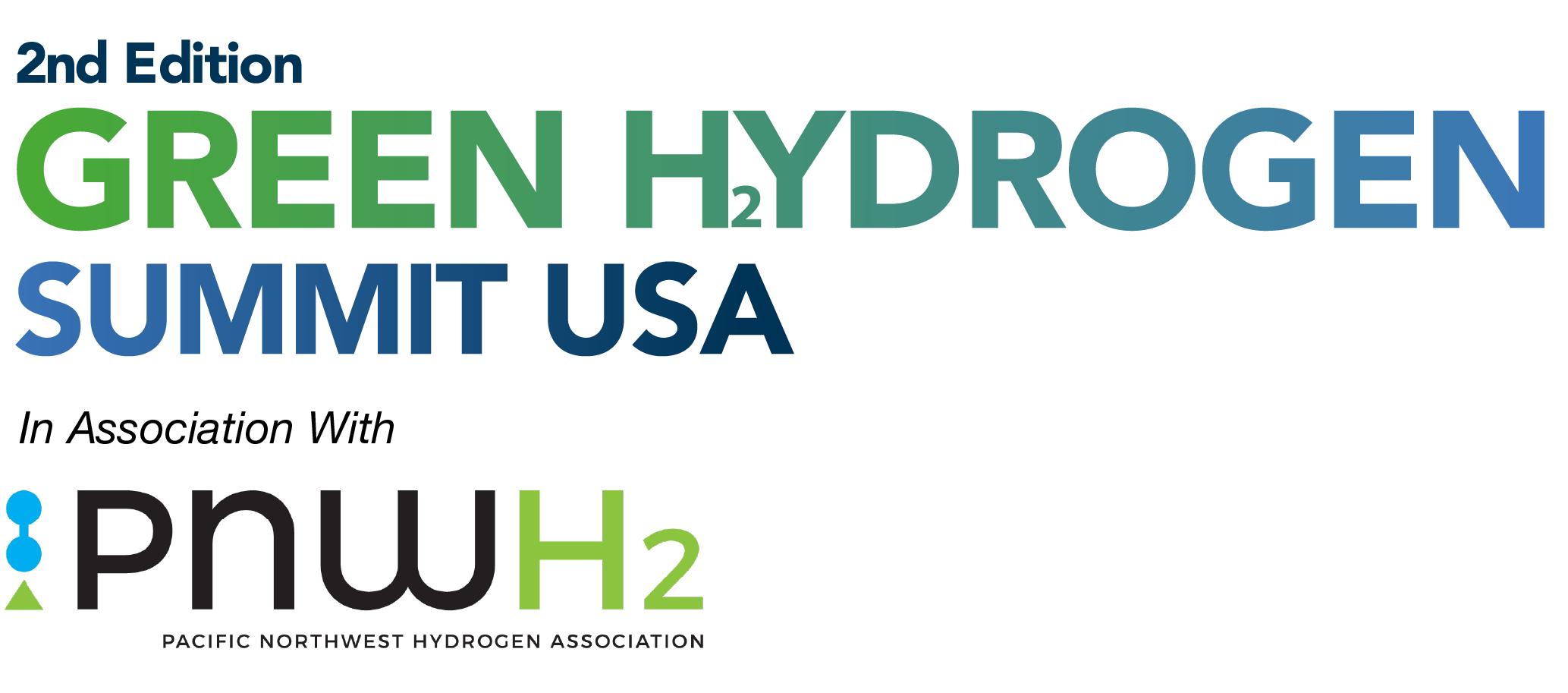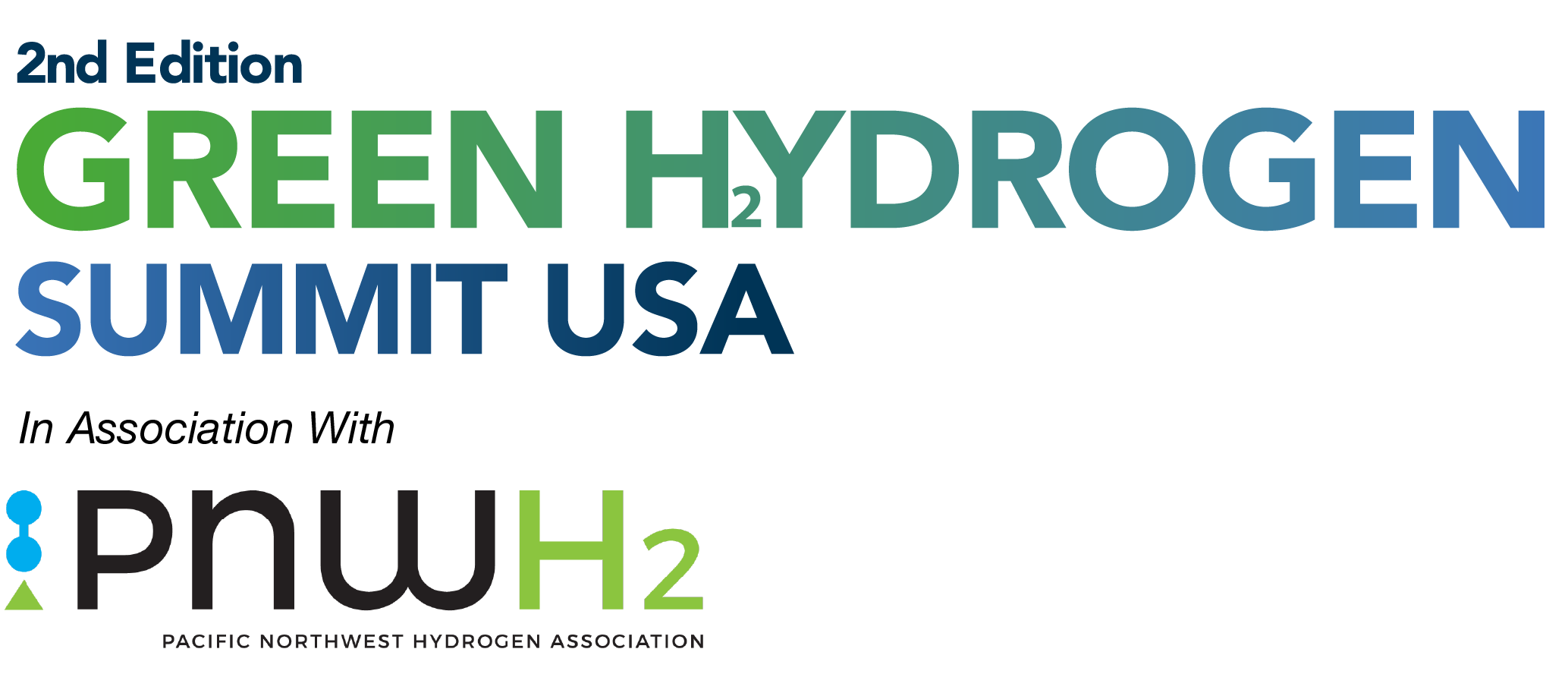2025 Agenda
Join us for the official opening of the Green Hydrogen Summit USA, where La’Marisa Barclay, Conference Producer at Informa Markets, will deliver opening remarks setting the stage for the summit. Day One will be expertly chaired by Jaclyn Woodson, Director of Operations at the Pacific Northwest Hydrogen Association (PNWH2), who brings extensive regional hydrogen ecosystem expertise to guide our discussions.
Moderator
Speaker
Join us for an inspiring keynote address from Jessyn Farrell, Deputy Mayor of the City of Seattle. In this opening keynote, Deputy Mayor Farrell will share Seattle’s vision for hydrogen integration in urban sustainability planning and highlight the city’s commitment to clean energy innovation. Drawing on her extensive experience in public policy and urban development, she will address how metropolitan centers can serve as catalysts for hydrogen adoption across the West Coast, while exploring the intersection of policy, infrastructure, and community engagement in building a sustainable hydrogen economy.
Speaker
Speaker
With the hydrogen industry facing a shift in federal support under the Trump administration, stakeholders must chart a new course to ensure continued momentum and deployment. This session will address how the hydrogen ecosystem can adapt to an uncertain policy environment by leaning into market-driven strategies, unlocking private capital, and building investor confidence. Industry leads, project developers, financiers, and policymakers will examine how to scale infrastructure, stimulate offtake, and enhance bankability despite regulatory headwinds. The conversation will also explore how state-level initiatives, corporate decarbonization goals, and cross-sector collaboration can fill the federal gap and advance the U.S. hydrogen market.
- How can project developers make hydrogen projects more attractive to private investors and commercial lenders in the absence of strong federal incentives?
- What financial structures or models are best suited to mitigate risk and attract capital?
- What does a resilient U.S. hydrogen market look like without DOE leadership?
- What should the industry prioritize in the next 2–3 years to avoid stagnation and ensure continued progress?
Moderator
Speakers
- How are private investors and financial institutions adjusting their risk assessment models for hydrogen projects in light of policy uncertainty, particularly regarding stationary power applications that may not necessarily be hydrogen-based?
- With oil and gas equipment shortages affecting the energy transition, how can hydrogen projects position themselves as solutions?
- What project structures and business models are proving most resilient to policy uncertainty, particularly for projects already under construction with 2027 completion targets?
- How can developers leverage international partnerships and global capital markets to finance U.S. hydrogen projects when domestic policy support becomes uncertain?
- What specific bankability criteria are lenders now prioritizing for hydrogen projects, and how should developers prepare their financial models accordingly?
Moderator
Speakers
Discover how Honeywell is at the forefront of reducing Levelized Cost of Hydrogen and derivatives (LCOx) through innovative strategies that focus on reducing CAPEX and optimizing OPEX, including managing power and cost variability leading to substantial reductions in energy expenses.
Furthermore, explore how optimizing the entire Power-to-X value chain, including hydrogen and its derivatives, boosts operational efficiency & equipment life; and delve into Honeywell’s methods for managing and reducing emissions and carbon intensity of hydrogen and its derivatives, paving the way for a more sustainable and eco-friendly energy future.
Speaker

- How can we better align investor expectations with the actual pace of hydrogen market development?
- What specific barriers are preventing more hydrogen projects from reaching final investment decision (FID)?
- How can we address the buyer-seller mismatch in the hydrogen market to accelerate project development?
- How effective have recent policy developments (EU quotas, US tax credits, Japan’s contracts for difference) been in moving projects forward?
Speaker
The Washington State Department of Commerce’s Office of Renewable Fuels will present their strategic work advancing green hydrogen deployment across the state. This 20-minute session will highlight recent policy achievements, current projects including the Pacific Northwest Hydrogen Hub, and upcoming opportunities to support Washington’s leadership in renewable fuels development and decarbonization goals.
Speaker

In July 2024, the Pacific Northwest Hydrogen Hub, led by the Pacific Northwest Hydrogen Association (PNWH2), secured $27.5 million in initial funding from the Office of Clean Energy Demonstrations (OCED) to kick off Phase 1 of an ambitious $1 billion project. This hub includes eight green hydrogen projects across Washington, Oregon, and Montana. How can companies in the Pacific Northwest region engage with and benefit from this groundbreaking initiative?
- How can the PNW H2 Hub leverage its renewable energy resources for hydrogen production?
- What strategies are most effective for community engagement in the PNW region?
- How can the PNW H2 Hub collaborate with other regional initiatives to maximize impact?
- What are the infrastructure structures needed for the PNW H2 Hub to succeed?
- How can the hub ensure long-term economic benefits for local communities?
Moderator
Speakers
Maritime transport accounts for approximately 2.5% of global GHG emissions, making it a key sector in the EU’s efforts to meet its Paris Agreement commitments and 2030 climate goals. According to the International Energy Agency’s 2050 net-zero scenario, the shipping industry will need to consume 15 million tonnes of hydrogen annually as fuel, contributing to a total of 59.5 million tonnes used annually by 2050 for both fuel production and direct use. How will the maritime industry integrate hydrogen—will it primarily transport hydrogen or utilize it as a fuel?
- What are the expected timelines for the deployment of hydrogen-carrying vessels in U.S. waters?
- How feasible are smaller-scale hydrogen-carrying vessels, and what are the potential benefits and challenges?
- How can public-private partnerships facilitate the rollout of hydrogen pilot projects, and what are the strategies for navigating complex approval processes?
- In comparing hydrogen to electrification, what are the relative advantages and trade-offs for decarbonizing shipping?
- What federal funding opportunities, such as the Clean Ports Program, are available to support hydrogen adoption in the maritime sector?
Moderator
Speakers
California has become the first state to receive federal funding for a hydrogen energy hub, with the U.S. Department of Energy awarding an initial $30 million to kickstart the planning and design phase. The California Hydrogen Hub is set to receive up to $1.2 billion in total, playing a crucial role in the Biden administration’s strategy to combat climate change. What does this mean for the future of hydrogen in California, and how can stakeholders get involved?
- How can the ARCHES hub integrate with California’s existing renewable energy infrastructure?
- What are the most effective strategies for community engagement in California?
- How can California’s regulatory environment support the growth of green hydrogen?
- What roles do public-private partnerships play in the success of the ARCHES hub?
- How can the hub ensure that hydrogen projects are equitable and inclusive?
Moderator
Speakers
Drawing on HTEC’s 20 years of experience across the clean hydrogen value chain, this presentation will examine how the company’s integrated strategy creates viable business cases for all stakeholders in British Columbia’s developing hydrogen ecosystem. The session will highlight HTEC’s coordinated approach to balancing production facilities, distribution networks, and vehicle deployment programs in concentrated geographic regions. Attendees will gain insights from HTEC’s recent initiatives, including plans for three hydrogen production facilities, a liquefaction plant, a 20-station refueling network, and the deployment of 100 hydrogen trucks through their H2 Gateway program in British Columbia.
- How British Columbia’s regional ecosystem approach resolves the fundamental supply-demand coordination challenge in hydrogen transportation markets
- What financing and business models are proving most effective for accelerating fleet transitions to hydrogen fuel cell electric trucks in the region
- How hydrogen infrastructure deployment is being sequenced to support the gradual transition from gaseous to liquid hydrogen as demand scales
- What partnership structures between technology providers, fleet operators, and infrastructure developers have proven most successful in HTEC’s British Columbia experience
Speaker
With growing interest in sustainable transportation, hydrogen fuel cell vehicles are at the forefront of innovation, particularly in heavy-duty transport, transit, and refueling infrastructure. Achieving widespread adoption requires overcoming challenges related to vehicle deployment, cost reduction, and infrastructure compatibility. As the U.S. aims to expand hydrogen refueling stations from 59 to 163,000, stakeholders must align strategies to meet demand.
- How are hydrogen fuel cell vehicles positioned to impact sustainability efforts?
- What advancements are needed to make hydrogen vehicles more competitive?
- What are the key challenges in deploying hydrogen refueling stations?
- How can public-private partnerships accelerate infrastructure development?
- How can costs associated with hydrogen fuel cells and refueling be managed?
- What best practices from other countries can be applied in the U.S.?
Moderator

Speakers

Speaker
A leading non-profit healthcare provider Klickitat Valley Health, has taken a groundbreaking step toward sustainable energy by installing a 100 kW hydrogen-powered fuel cell system for backup power, peak shaving, and demand response. Developed in partnership with Rehlko (formerly Kohler Energy) and Toyota Motor North America, this project marks a significant milestone in the transition to zero-emission energy solutions for mission-critical applications.
- Why KVH chose hydrogen fuel cells over conventional backup power solutions?
- How Rehlko’s fully integrated approach ensured seamless installation and operation?
- What role can hydrogen play in making hospitals more sustainable?
- How does fuel cell technology enhance emergency backup and grid independence?
- What are the cost benefits and operational efficiencies of fuel cell adoption?
- Can this project serve as a blueprint for other hospitals and mission-critical facilities?
Speakers
Approximately 9 liters (2.4 gallons) of water are required to produce 1 kilogram of hydrogen through electrolysis, meeting U.S. hydrogen production goals could significantly increase water consumption, potentially equating to the annual water use of 34 million Americans. As the hydrogen industry expands, understanding and managing its water footprint becomes increasingly critical. This panel will explore the complexities of water consumption in hydrogen production, focusing on the U.S. context, and discuss strategies to mitigate associated risks.
- How can H2 producers consider water usage and understand the implications for water-stressed regions?
- What advancements aim to reduce water consumption in hydrogen production, such as improved electrolyzer efficiency and alternative water sources?
- Do current policies address water usage in the hydrogen sector?
- What are the cost implications of water consumption and management in hydrogen projects?
Moderator
Speakers
- Where is heat rejection equipment required in Green H2 production?
- What types of heat rejection equipment are available for process cooling?
- What factors determine the type of heat rejection equipment to use for your project?
Speaker
- How is NYSERDA prioritizing projects within its $32 million hydrogen innovation funding portfolio?
- How is NYSERDA addressing the cost challenges of hydrogen production, transport, and storage to make it economically viable?
- How is NYSERDA collaborating with industrial partners and research institutions to advance clean hydrogen technologies?
- New York Green hydrogen assessment released by NYSERDA covering state-wide demand analysis, infrastructure, cost and innovation focus areas.
Speaker
One of the primary demands for hydrogen today is ammonia production, 43% of hydrogen was used for ammonia production in 2018. With 120 ammonia terminals already in place globally, facilitating both the export and import of ammonia, how can ammonia be optimized to advance the hydrogen economy and meet future energy needs?
- How can ammonia be used as an effective hydrogen carrier in the global economy?
- How can hydrogen and ammonia producers remove challenges and opportunities in producing green ammonia?
- How can the hydrogen industry leverage ammonia for large-scale storage and transportation?
- What Are the Project Development and Technology Implications on Scaling Ammonia Production?
- How does ammonia compare to other hydrogen carriers in terms of cost and efficiency?
- How does the emerging utilization of hydrogen as a carrier compare to traditional uses like ammonia in fertilizer production in terms of efficiency, scalability, and economic impact?
Moderator
Speakers

As the hydrogen industry expands in regions with strong policy support and renewable energy infrastructure, the need for a skilled workforce is becoming critical. However, the sector faces a significant skills gap, with demand for hydrogen expertise outpacing the current supply of qualified professionals. How can key workforce development initiatives such as the U.S. Department of Energy’s, educational institutions, industry partnerships, and federal policies help to prepare the workforce for emerging hydrogen-related occupations.
- What are the key skills needed in the emerging hydrogen job market, and how can educational institutions better align their programs to meet this demand?
- How can workforce development programs like H2EDGE be scaled to address the hydrogen skills gap across multiple regions in the U.S.?
- What role should industry partners play in collaborating with universities and training centers to ensure the workforce is adequately prepared for hydrogen production, storage, and distribution?
- How do policy changes, such as the IRA tax credits or federal energy incentives, influence workforce development in the hydrogen sector?
- How can public awareness be raised to attract more individuals to pursue careers in hydrogen?
Moderator
Speakers

As the global energy sector pivots toward decarbonization, green hydrogen and renewable energy projects are emerging at unprecedented scale and speed. These projects bring new
technical interfaces, unique hazard profiles, and evolving regulatory frameworks- challenging traditional construction safety models. For Zero Harm to remain a non-negotiable standard, safety planning must adapt to meet these changing demands. Drawing on decades of senior HSE leadership across mining, oil & gas, power, and large-scale industrial projects, this session provides a Subject Matter Expert’s perspective on translating proven Zero Harm strategies into the high-hazard, high-innovation environment of green hydrogen construction.
- Adapting industrial construction HSE systems to hydrogen and renewable energy project hazards
- Integrating high-energy control (HECA) and bow-tie critical control methods into planning
- Strengthening leadership engagement and contractor alignment in multi-disciplinary project delivery
- Leveraging lessons learned from high-risk sectors to reduce hydrogen construction incident potential
Speaker

Marginalized communities facing historic underinvestment are set to receive 40% of the overall benefits from federal climate and clean energy investments. The U.S. Department of Energy is using the Climate and Economic Justice Screening Tool to identify and prioritize low-income households with the highest energy burden, ensuring access to clean energy through grant-funded programs. This interactive panel will explore how federal, state, and local initiatives can empower communities with the knowledge and resources needed to shape an equitable green hydrogen future. Panelists will discuss strategies for inclusive economic development, community-driven decision-making, and the role of Tribal Nations in advancing energy secutity.
- How can communities directly engage with federal programs to maximize the benefits of green hydrogen investment?
- What strategies can ensure that underserved communities and workers have access to training, jobs, and economic opportunities in the green hydrogen sector?
- How can local governments collaborate with industry and advocacy groups to promote equitable access to green hydrogen resources?
- What policies are needed to align green hydrogen development with the energy sovereignty and economic goals of Tribal Nations?
- How can educational initiatives and workforce development programs ensure a just transition for all communities?
Moderator
Speakers

- How could Deep Hot Dry Rock Geothermal (DHDRG) energy production in the Seattle area support the Pacific Northwest to Alaska Green Corridor’s goals for zero-emission cruise travel?
- What advantages would on-site production of hydrogen-derived marine fuels from geothermal energy offer compared to other clean energy sources for meeting the cruise industry’s decarbonization targets?
- How could a multi-fuel production facility using geothermal energy align with the Pacific Northwest Hydrogen Hub (PNWH2) initiatives and leverage potential federal funding?
- What technical and economic challenges must be overcome to make hydrogen-derived marine fuels from geothermal energy commercially viable for the Alaska cruise industry?
Speaker
The Green Hydrogen Summit USA features an exclusive Executive Roundtable Program designed to facilitate in-depth discussion, strategic networking, and practical problem-solving in a confidential environment.
Roundtable One – India’s Green Hydrogen Market Strategic pathways to access India’s $2.3 billion hydrogen market through partnerships and regulatory navigation. [Led by Purnima Voria]
Roundtable Two – Hydrogen Infrastructure for Transportation Advancing critical infrastructure development for heavy-duty transportation and aviation applications, with focus on refueling technologies and safety standards for a clean energy future. [Led by Chris Wallington]
Roundtable Three – Advancing Integrated Hydrogen Solutions This roundtable explores how integrated approaches solve critical hydrogen project challenges. Drawing on expertise spanning hydrogen creation, compression, storage, refueling, and fuel cells, participants will discuss practical implementation strategies that prevent project failures. [Led by Carl Rivkin]













































